Welcome to America! We pick up our story after the Meara’s arrival at New York City’s Castle Garden port of entry on August 24, 1850 (shown below in 1851).
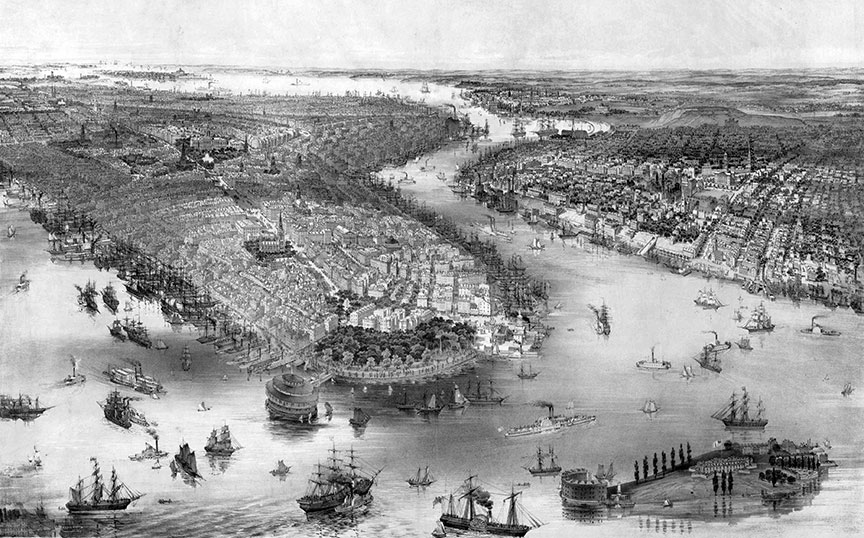
After the 1850 immigration document from their date of arrival, the written record for our Meara’s is very quiet (thus far in my search) until possibly 1853, when a “Maurice O’Mara” dealing in prints shows up at an address in the vicinity of the Meara’s later known address on Walker (more later):

By 1855, five years have passed from the Meara’s initial arrival in New York City. That year, Franklin Pierce was President of the United States. In California, the Gold Rush was coming to an end. Our known Meara’s (now written as “O’Mara”) show up for the second (and last) time as a full family in a written record, the June 16, 1855 New York State census. This document as notated by the census enumerator places them in the 14th Ward (with a note that Honora was unable to read):

This is a map of the wards of lower Manhattan as they were drawn in 1855:
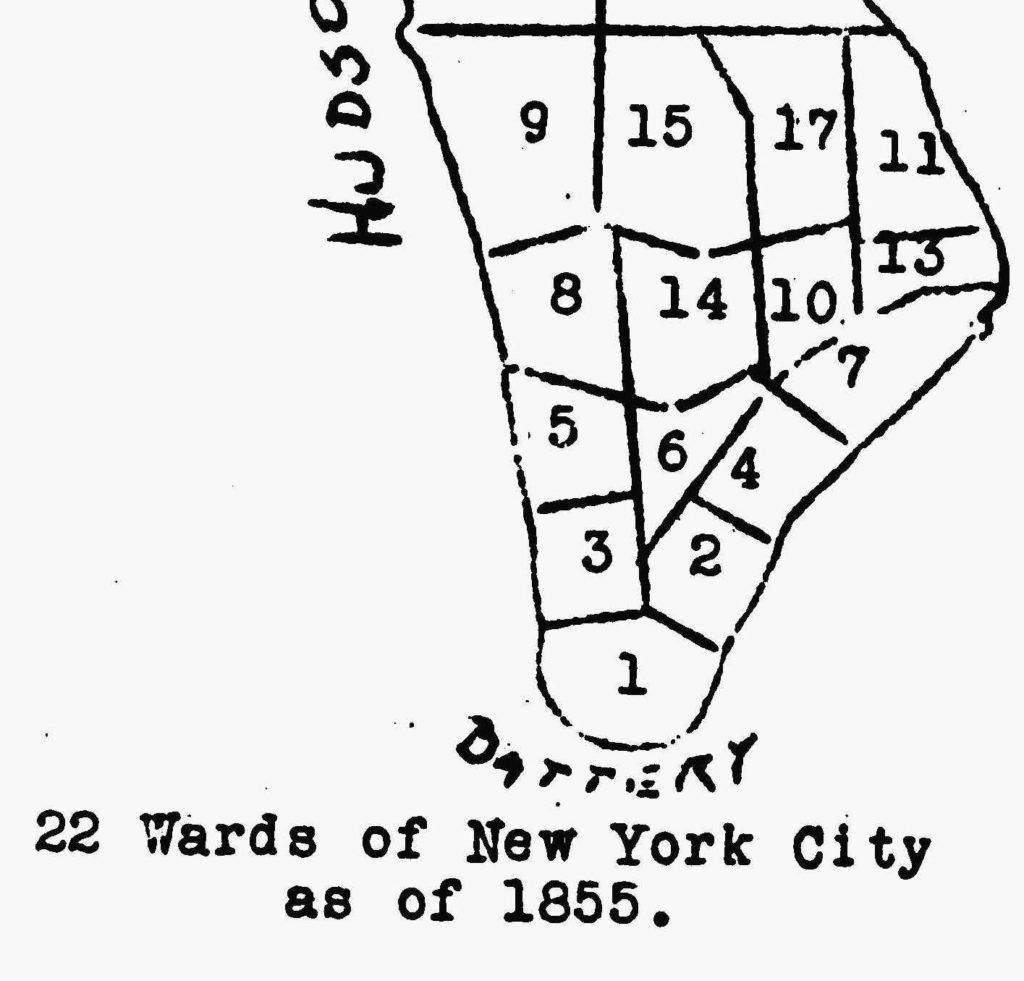
Here is the 14th Ward on a map from 1890, 40 years later. Note Canal St. on the bottom (more later):
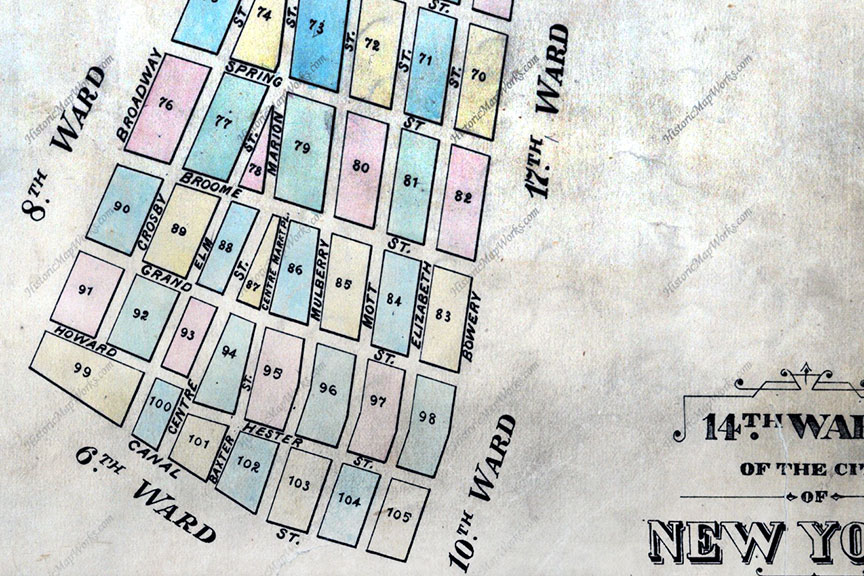
In the 1855 New York City directory, there is a Morgan Mara living at 134 Walker St. That address happens to fall right at the bottom of the 14th Ward where it borders the 6th Ward, so the pieces of locating exactly where they lived are fitting together!

Hoping to see if their apartment house at 134 Walker St. still existed, I Googled the address and discovered that today it would sit smack in the middle of what was once called Harry Howard Square, a triangular intersection at the border of Little Italy and Chinatown! So what happened here?

The story of the complete redesign of this particular intersection from the standard right-angled grid to a large open triangle plaza begins in the early 1850s. Canal St., crossing the island from the west, came to a dead T-bone stop at Centre St. After a bit of a jog right and then left, one could continue down Walker to the east side of Manhattan.
Highlighted in yellow on this 1850 map is the interrupted route of Canal St. across Manhattan with the jog clearly visible:

The same area is seen below (at upper right, slightly different angle) in 1852. The Mara’s residence nearby is circled near the bottom:
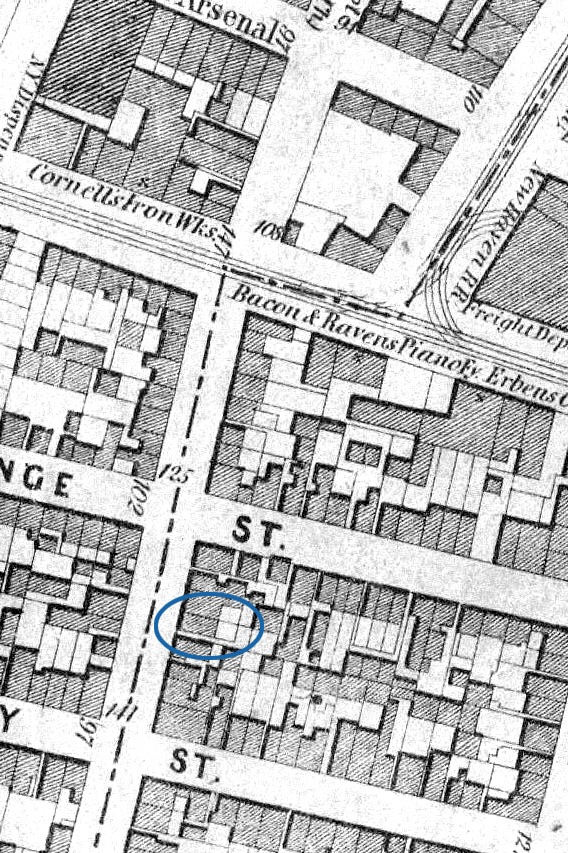
Based on the map above, you will begin to see a big logistical problem developing for the Mara family… and it was not their only one!
To increase the efficiency of crosstown traffic via an unbroken path from one side of Manhattan to the other, the city Aldermen got the idea to extend Canal St. straight through the middle of a couple of blocks along Walker St. to join up Canal with the existing stretch of Walker.
“In order to accommodate the increased traffic generated by this [economic] growth…many downtown streets were extended and widened. The greatest of these improvements…was the extension of Canal Street two blocks east from Centre Street to Mulberry Street where it was merged with Walker Street. At this time many of the houses on Walker Street were cut back or replaced with new buildings.” (Landmarks Preservation Commission March 12, 1985)
The earliest news reference I found so far in regards to this drastic street widening plan is dated October 19, 1850:
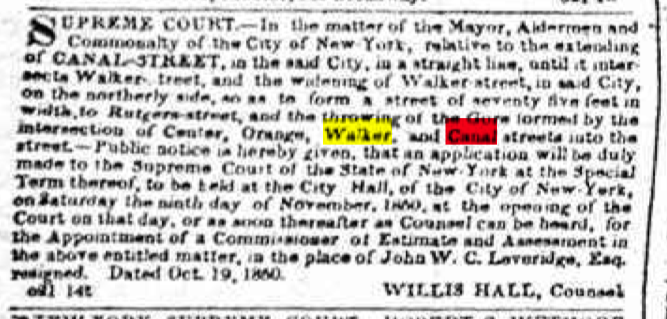
The next news item I located about the planned extension of Canal Street and subsequent widening of Walker is dated July 13, 1852 (unfortunately slightly cropped-off):
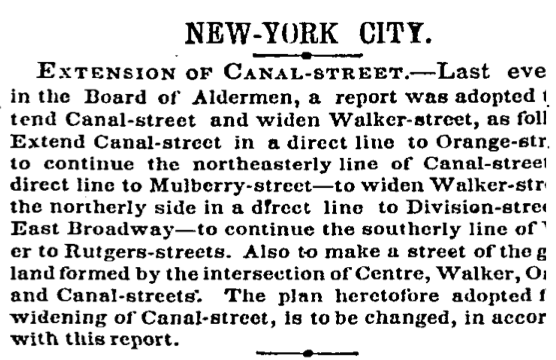
Here is the O’Mara’s/Mara’s address at 134 Walker (circled below) on an 1853 map. Note the lines for the proposed Canal St. extension which were already drawn on this original map, its outer edges passing right through their apartment – assuming they lived in the front building and not the rear one (which may have survived for a time).
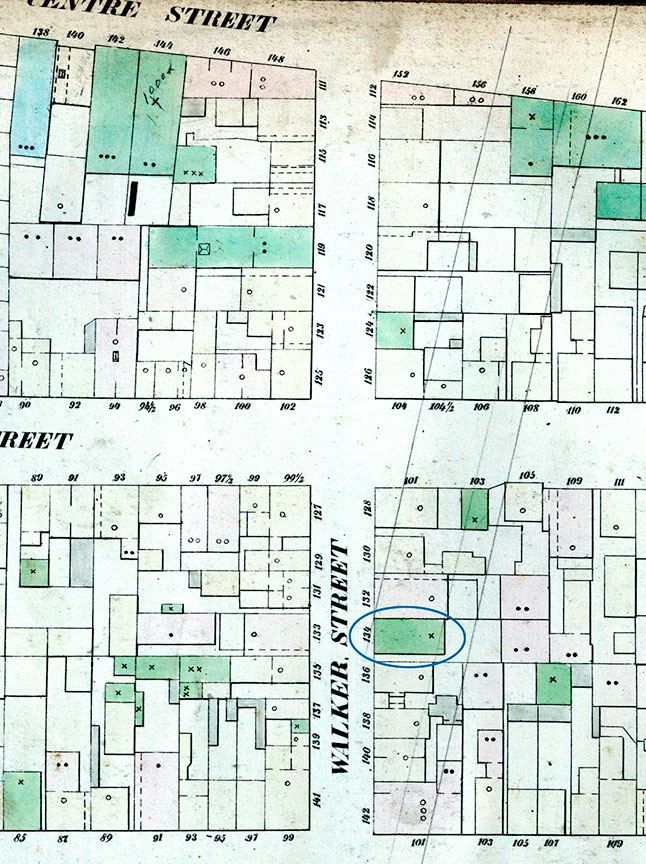
Before we proceed with the ticking time bomb of inevitable “progress” that was to unfold in this neighborhood over the next couple of years, let’s step back and get an overview of the 134 Walker St. property and see what else we can find out about the structure and its residents over time, before it was all changed forever.
First, for a bit of reference, this neighborhood was in Lower Manhattan near the original location of the Collect, a large freshwater pond which was eventually filled in and built over. It was also just a couple of blocks north of and contemporary with the infamous Five Points neighborhood:
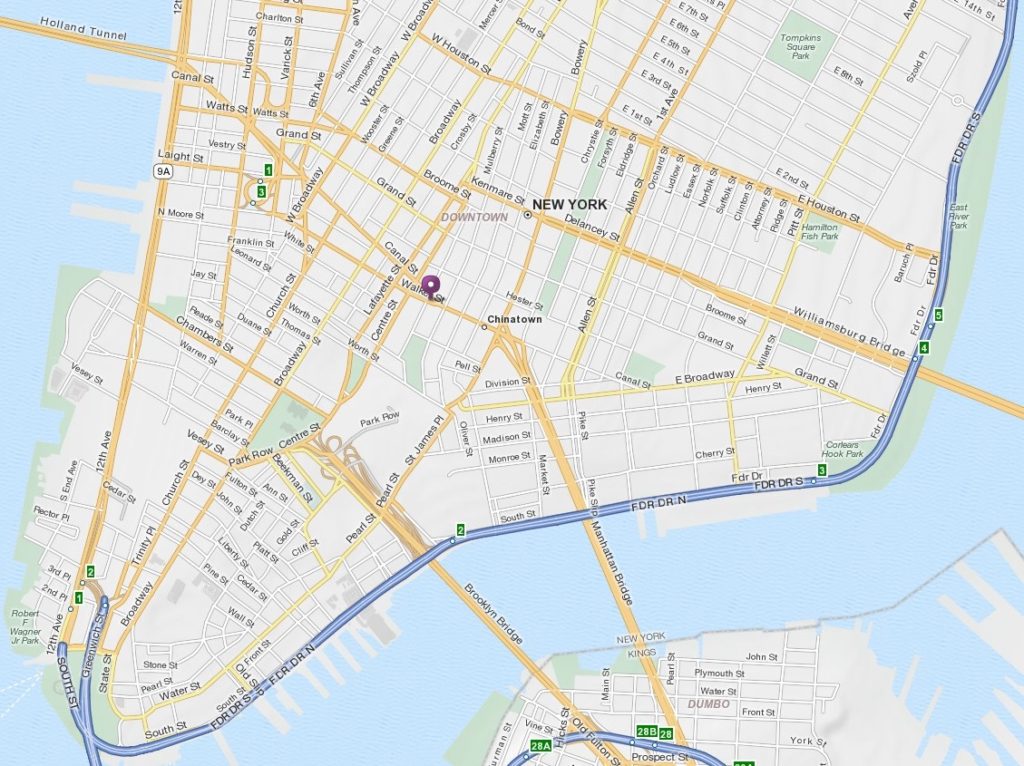

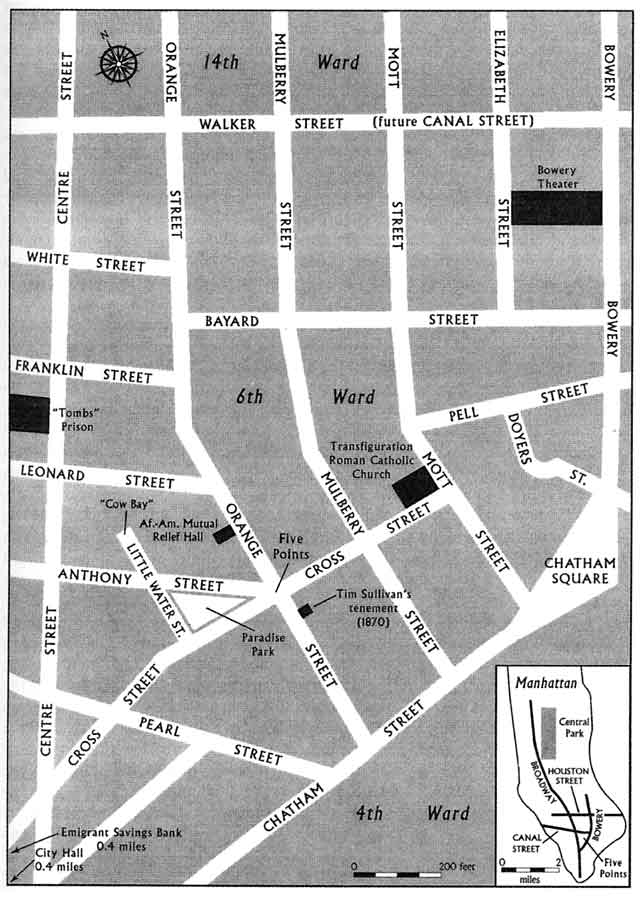
Based on contemporary maps, classified ads and news items, here is a quick summary of the goings-on at this address over the years. (Keep in mind the Mara’s immigrated from Ireland to New York in August 1850; I’m not sure if 134 Walker was their first and only address or not, but they were definitely there for some time before mid-1855.)
In terms of physical structure, 134 Walker was a brick building on a 23×100 foot lot, with a rear house as well. The address existed at least as far back as April 1829 when a fire destroyed a stable in the rear of the property. A year later a funeral was held there. In September 1841 a couple living at the address was charged with keeping a disorderly house in the basement involving juveniles, thieves and disreputable persons.
In 1843 there was a shoes and boots stand next door. The 134 Walker house and lot was auctioned off in March 1845. In 1846 we see a “respectable woman” living on the third floor of the rear house seeking employment as a nanny or housekeeper. In May 1849 a 17 year-old at this address was shot with a “ball through left side” during some neighborhood skirmish. Another funeral took place here in March 1852, and more situation wanted ads were placed in 1853 by a resident who was a cook and possibly another living there who was a waiter.
The last personal ad was interesting as it said to inquire “in the bakery” at 134 Walker. According to the 1855 census, a person named Peter Giblin, a baker from Ireland (and his teenage son Michael, also a baker), lived in the same structure as the Mara’s:

In 1854 another funeral took place at 134 Walker and a young woman living there was still looking for a job as a cook, waiter or chambermaid, with the bakery as the contact location.
Now that we have reached the known period of the Mara’s residence at 134 Walker, we resume the story of the extending of Canal St./widening of Walker St., one of the factors forcing the end of the Mara’s residence at this location. By April 1855 the widening project was picking up steam with legal objections being dismissed and other preparations being made:

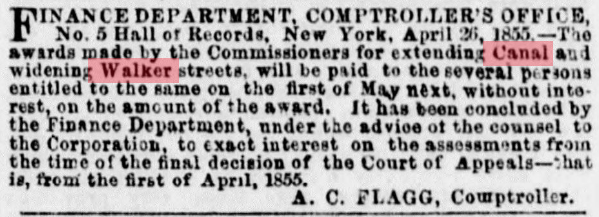
On June 1, 1855 this very descriptive article about the project appeared in the New York Tribune:

The work seems to have been completed later the same year in the winter of 1855/56, but in late June 1855, we are suddenly no longer concerned about the street widening – despite how disruptive as it is to the Mara’s block – as something much worse has happened to the family.
The census taker came by the Mara’s residence on June 16, 1855 and made note of the family members as shown at the top of this page: Morgan, his wife Honora, sons John and William. Not listed is our ancestor Morris (eventual father of Francis), due to be born only a few months later.
For the date of June 30, 1855, we see this awful handwritten (and transcribed) record: Morgan Mara (“Maurice O’Marra”), of 134 Walker, has suddenly died:

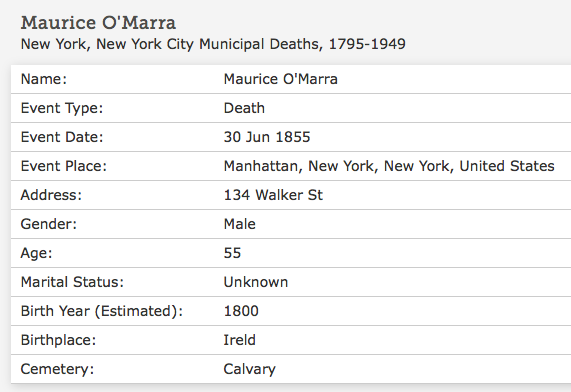
What happened here? The cause of death on the document was “Heat of sun” (also known as “coup de soleil”). It turns out that this year (as in previous years), Manhattan was experiencing a terrible summer heat wave that was claiming many lives. This (excerpted) article from July 1, 1855 references the weather of the day before, the day Morgan died:
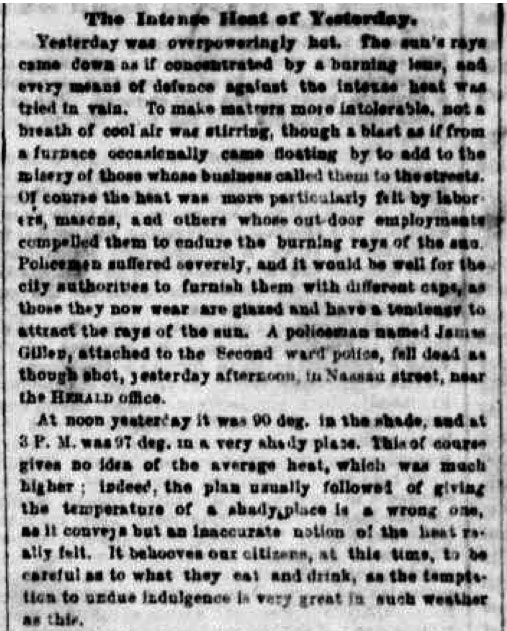
And this, also from July 1:
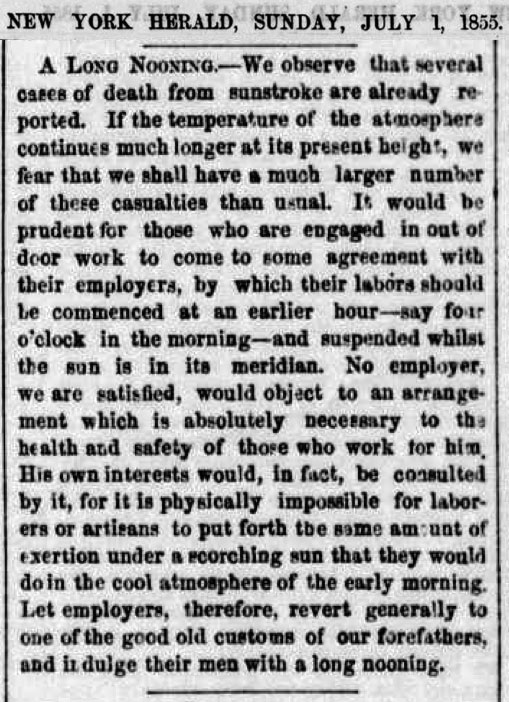
We don’t know what type of work Morgan was doing, whether at the bakery in the building where he lived, as a laborer helping tear down buildings on Walker St. or some other work, but his cause of death is plain.
Morgan was buried alone at Calvary Cemetery (most likely in the First Calvary or Old Calvary section shown in the 3D photo below) in Long Island City, Queens, as burials had ceased in Manhattan itself in 1852.

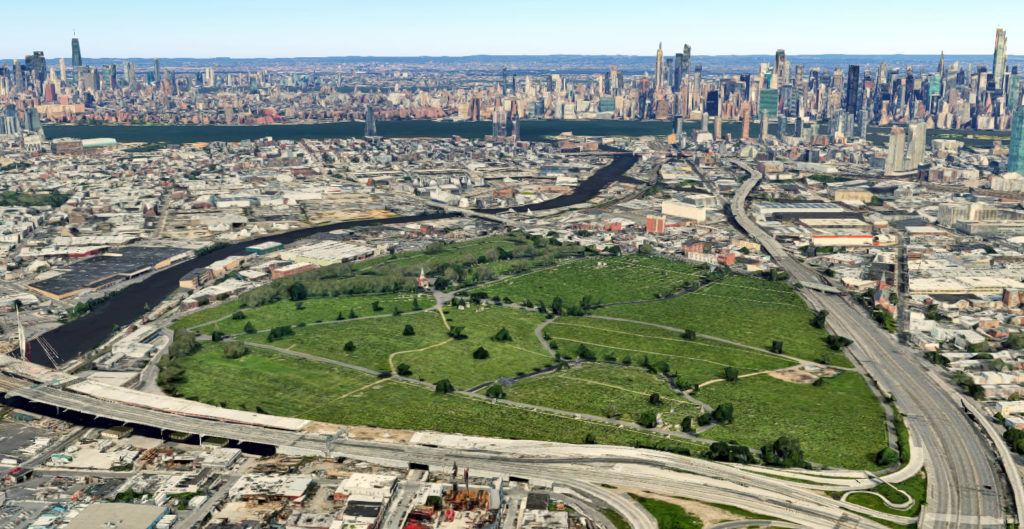
At the time of this event Morgan’s wife Honora was about 6 months pregnant with our ancestor Morris, who was born in September and seems to have been named after his late father. By the time of the next written record of the family, the 1860 NJ census, the family without Morgan will have already relocated directly across the Hudson River to downtown Jersey City, the city where our particular ancestors would live, work, marry and have their own children for many decades to come.
Closing out the story of the Mara’s in New York City, we’ll pick up the story of the Canal Street extension.
The following images show what the Mara’s former immediate neighborhood looked like in 1860, 1863 and 1893, looking to the west just immediately up the same block from their home at 134 Walker:
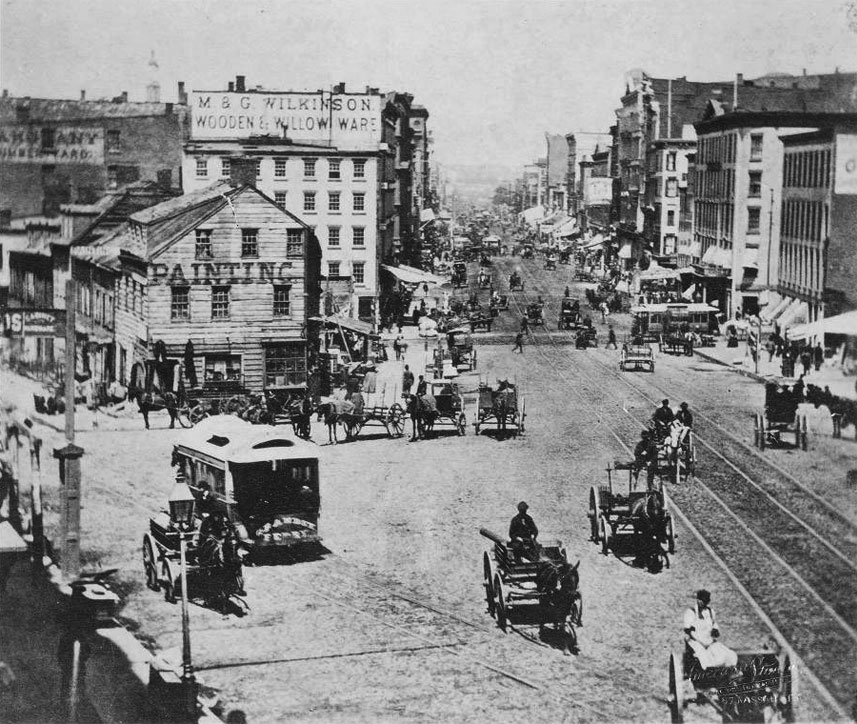
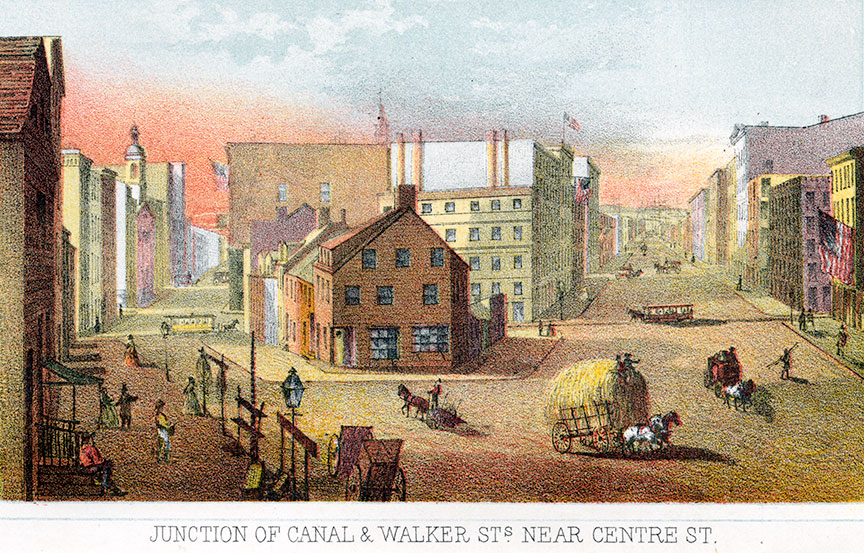
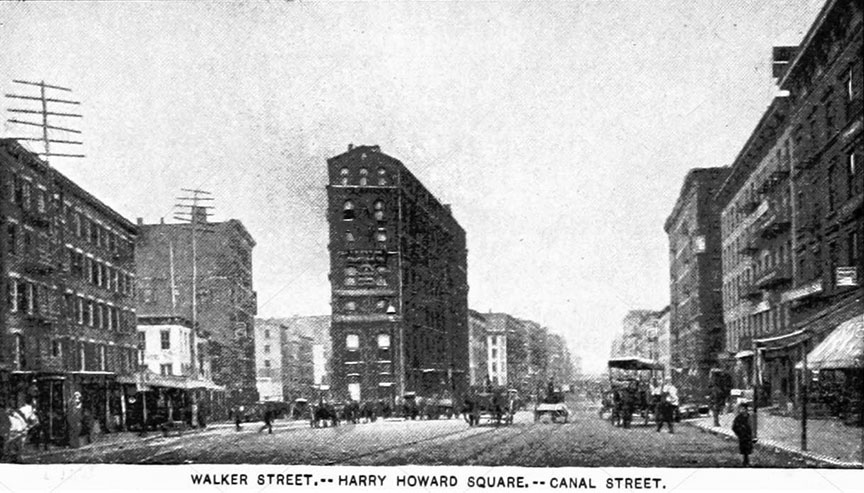
Here’s a 1903 aerial map view of the same block. The Mara’s address at 134 Walker was located about where the words “Harry Howard Square” are:
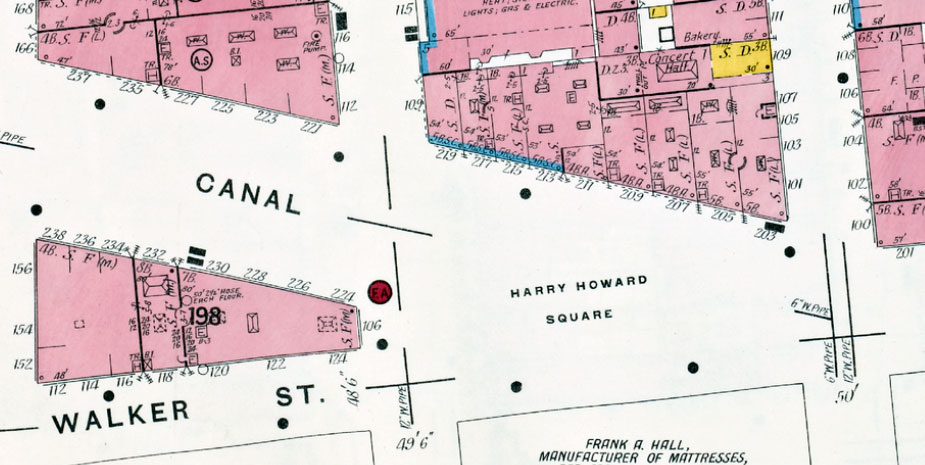
NEXT: The Meara’s settle in Jersey City (for over a century!)